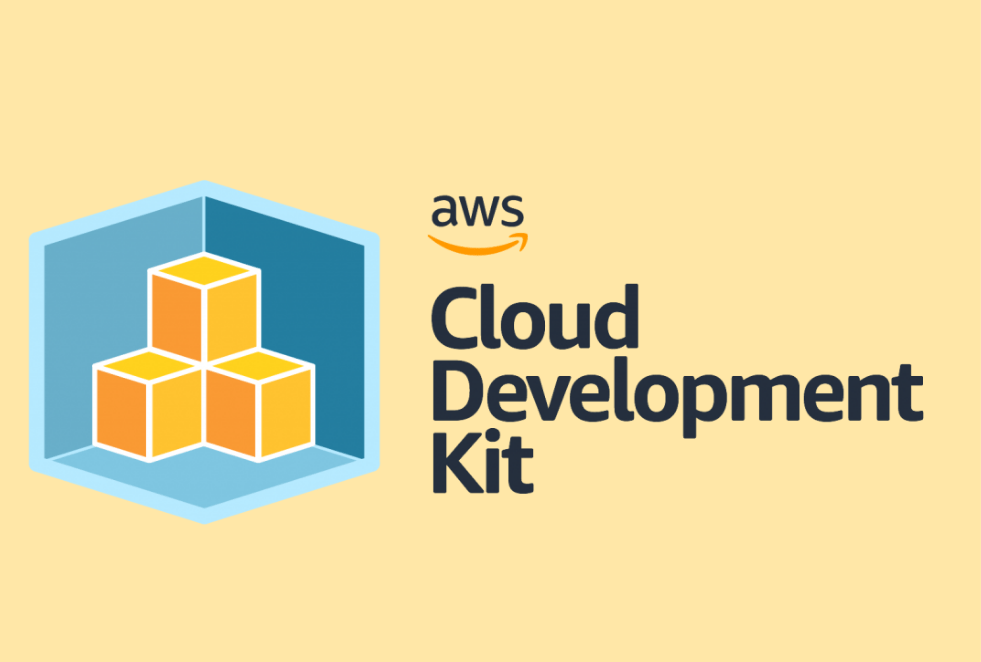What is meant by cloud development?
The process of developing software that may be used exclusively on web-based platforms, often known as cloud development, involves developing computer solutions or applications. For compared to internal software development, it offers more freedom when creating and deploying new applications. The majority of cloud services are web-based offerings that make use of virtual, scalable, and reliable resources that let you select the degree of control you want over your information and applications. For a nominal charge, a cloud provider or technology department can provide unique services by utilizing cutting-edge technologies using a wide range of cloud services for developers.
As a result, they are able to forgo ongoing maintenance, procurement, or planning activities and concentrate on large-scale cloud application development. We combine server-side programming, sophisticated database capabilities, and mobile-first design methodologies to create high-performance cloud computing application development. Our cloud-native app development as a cloud-based development firm encompasses ERPs, CRM systems, and much more. Our integration services enable us to install cloud-based services in public, corporate, or hybrid settings.
Using our top-notch cloud development solutions, you may improve your chances of dominance by taking use of our solid technological expertise in the field of cloud software development. The cloud app development services we offer are carried out by a group of specialists who are highly qualified, talented, and dedicated. We provide solutions that address the various needs of our client’s thanks to our more than ten years of experience in the development of cloud-based apps.
Types of cloud development:
1. Iaas (Infrastructure as a Service)
IaaS stands for Infrastructure as a Service, which indicates that a cloud service provider handles your infrastructure (the physical servers, networking, virtualization, and data storage) for you over the internet. In essence, the infrastructure is rented by the user, who gets access via an API or dashboard. While the provider manages any hardware, networking, hard disks, data storage, servers, and other technical aspects, the user is in charge of things like the OS, apps, and middleware. The provider is also in charge of handling hardware problems like outages and repairs. Cloud storage companies typically use this deployment technique.
2. Paas (Platform as a Service)
PaaS refers to an external cloud service provider providing and managing the hardware and a platform, but the user is in charge of the apps that run on top of the peak and the data such apps rely on. PaaS provides users with the ability to share a cloud platform for application management and development (a crucial DevOps component) without them having to build and maintain the facilities typically associated with the process. It is primarily for developers.
3. Saas (Software as a Service)
SaaS is a service that gives consumers access to a piece of software that the cloud service provider administers. SaaS apps are often web or mobile applications that consumers can access using a web browser. Users connect to the cloud services via a dashboard or API, and updates, bug patches, and other routine software maintenance are handled for them. SaaS also removes the requirement for a program to be locally installed on each user’s computer, opening up more options for teamwork access to the software.
4. BaaS (Backend as a Service)
The cloud computing method known as “Backend as a Service” (BaaS) acts as the server side for apps (mostly mobile). They provide tools and an API in a number of programming languages for interacting with their backend. Storage, analytics, push notifications, dashboards, and social inclusion are also included. In some aspects, it is similar to SaaS. SaaS is largely targeted at end users, whereas BaaS is mostly targeted at developers.
How does cloud development work?
Deep knowledge of data architecture is necessary for the creation of cloud applications. Standard web design and cloud app design are fundamentally different from one another since cloud-based applications function as a network of connected services (APIs). You must therefore consider how to make the most of cloud services. By connecting them and also being mindful of the many types of elements you have, you can do this. Additionally, these services must be capable of communicating with others.
The second aspect to look at is how the data is organized. How to separate the data for servers should be specified in the app design. Separate software parts can be kept anywhere, on a cloud-based service. The distance between your servers and your clients affects how quickly your app loads. Your company will become more adaptable as a result, giving you the possibility to enhance your online performance.
Make a communication logic for your app’s data and services. The majority of the parts of your program should be able to communicate in real-time. The user experience of your product may suffer the consequences of sluggish loading if this process is poorly planned. first, strengthen the lines of communication. Then select either single-channel streaming or network message batching as your winning strategy. It’s a great idea to plan ahead and think about your scalability possibilities. Think about the potential for more traffic. Your operational channels should have a safety buffer. Create an operating system that will support storage server and back-end component users even under the most trying conditions.
Advantages of cloud development
- Investment and cost-cutting
One advantage of developing software in the cloud is the reduction in IT expenses. Hard drives and other items like infrastructure won’t cost you any money. For regular remuneration, you are just charged a minimal monthly or one-time fee. That is in accordance with the service package that was agreed upon with the provider of cloud computing services. As they all utilize Cloud-based computing, the royalty payments associated with automatic software licensing are decreased.
- Flexibility
The development of cloud-based applications is essential for the workplace of today. A recent KPMG survey of 500 executives found that 42% of them cite flexible work as the main benefit of using cloud software development. Your staff’s work habits can be made more flexible as a result. You can quickly and easily connect to your virtual office using any web-enabled device if you need access to your documents and data while you are away from the office or at home.
- Cooperation effectiveness
Companies may easily communicate with one another and exchange information thanks to the cloud services design concept. By enabling several people to exchange and work together on data and files simultaneously, it enhances staff cooperation. The company’s employees can securely and quickly access work-related information thanks to the cloud.
- Scalability
The ability to scale is a key benefit of cloud service development. For businesses with fluctuating or increasing bandwidth requirements, cloud-based services are fantastic. Operations inside your company can be scaled up or down. Your resource storage requirements might need to be quickly modified to take these changes into account. By using the service’s remote servers, you can easily increase your cloud capacity if your needs change. Similar to that, the service enables you to reduce once more.
- Document Control
The more partners and representatives work together on documents, the more essential the need for strict document management becomes. Prior to cloud hosting, employees had to send and receive files. Each client might work on a different email attachment at a time. Eventually, you end up with a mishmash of files with contrasting content, formats, and names.
Successful cloud development examples
- Salesforce
Salesforce provides a cloud-based SaaS platform. All business-to-business and business-to-customer operations can use it as a solution.
- Slack
Slack is a cloud platform with an American base that makes use of tools and services to promote internal team collaboration.
- Nerds Back Cloud
The cloud system provided by Nerd Support Cloud Services Miami Services offers a wide range of services. All IT-related services are provided to medium-sized and small businesses through the Nerd Support cloud. They include SaaS platforms, hardware maintenance and upgrades, and security. They enable them to perform at their very best.
- Cloud by Google
Google offers the Google Cloud Platform as a cloud service. It is constructed using the same infrastructure used by Google for its consumer products, including Google and YouTube.
- Creative Cloud by Adobe
A group of services and products from Adobe Systems make up Adobe Creative Cloud. Members have access to a variety of programmes for site design, photography, graphic arts, video editing, and other tasks.
Various applications of cloud computing
- Societal clouds
A 3rd cloud provider manages public clouds, a particular category of cloud computing. These cloud service providers use the open internet to provide cloud services to their customers. The gear, infrastructure, and resources used for cloud storage are under the control and ownership of the cloud service. This means that any upgrades or problems that call for troubleshooting are normally handled by the cloud provider. Some public clouds offer free cloud services to its customers. In other public clouds, customers can select the amount of storage as well as other cloud systems they require through a tiered subscription scheme.
- Individual clouds
A private cloud’s storage and resources are only used by one person or company. Users can only access private cloud storage through a private network and not through the public internet. Private clouds may be situated on a business’s property. For a larger cost than a public cloud, certain third-party cloud providers might also provide clients with a private cloud option. Private clouds can provide enterprises with more security than a cloud platform because they don’t exchange their resources with numerous clients through the internet. But generally speaking, private clouds are more expensive than public ones.
- Blended clouds
Cloud services are combined to form a hybrid cloud. Organizations can often opt to mix different components from both kinds of clouds when using a hybrid cloud.
Because hybrid clouds may frequently be customized, businesses can operate with more flexibility thanks to this kind of cloud deployment. For instance, a company might employ portions of a private cloud to protect its sensitive business data while utilizing portions of a public cloud for routine document or document collaboration. Another illustration is when a business creates a hybrid cloud that acts largely as a cloud infrastructure for its IT and international accounting standards committee but primarily as a public cloud for its marketing and sales employees.
- Multi-clouds
A multi-cloud system is when a company makes use of numerous outside cloud service providers. To enhance their cybersecurity systems, several businesses opt to utilize numerous cloud service providers. Additionally, separate clouds for various company operations, departments, or branches can be maintained with the use of multi-cloud setups. However, a multi-cloud system makes it more difficult to transfer resources between clouds because all of your cloud data and resources are run on distinct infrastructures.
Amazon Web Services (AWS)
What does AWS service mean?
AWS (Amazon Web Services) is a sizable and dynamic cloud computing platform from Amazon. Both bundled software and services and platform like a service are included. Resources like processing capacity, database storage, or content dissemination can be offered via AWS services to a business. As an expansion of Amazon.com’s infrastructure for managing its online retail activities, Amazon (AWS) was established in 2006. One of the first businesses to offer a cloud computing platform that scales up to meet users’ compute, storage, and traffic needs was AWS.
AWS provides businesses and programmers with a range of tools and services that can be installed in data centers all over the world.
Benefits of AWS
- You get access to all the most trying-to-cut services which your app needs to run well thanks to AWS benefits.
- Because it was created with efficiency and security in mind, AWS is simple to use.
- AWS is a solution that just doesn’t demand any dedication.
- Price reductions from AWS have a long history, and the company offers several tools and programs to assist businesses to make the most of their money.
- AWS has a very secure layout that safeguards the privacy of your data.
- In terms of the services and security, AWS benefits are trustworthy.
- When necessary, AWS completes duties correctly and offers a range of features that increase its dependability, such as the ability to quickly recover from failure.
What is IBM cloud development?
The IBM Cloud platform integrates platform as a service (PaaS) with cloud infrastructure (IaaS). Both small production teams and organizations as well as huge commercial corporations are supported by the platform, which scales. The solution you develop on IBM Cloud® is globally deployed among data centers, enabling quick startup and dependable performance in a tried-and-true setting.
With tried-and-true architecture patterns and techniques for quick delivery for operating mission-critical workloads, IBM Cloud offers solutions that enable a better degree of compliance, safety, and administration. You may install it locally with the ability to scale globally because it is available in data centers across 19 different nations and has insight into the different regions in North and South America, European, Asia, and Australia.
With our open source technologies, which include Kubernetes, Red Hat OpenShift, and a broad range of compute options, including virtual servers, containers, bare metal, and serverless, you have the control and flexibility required to support apps in your hybrid environment. Workload portability may be ensured while deploying cloud-native apps.
The platform’s open architecture is designed to support your use case, whether you need to migrate apps to a cloud, modernise your current apps using cloud storage, ensure data strength and resilience against regional failure, or use fresh paradigms and deployment structures to innovate and build your cloud-native apps.
- Machine learning:
A set of information and tools for creating your personal AI models that are based on Watson.
- Automation:
Business workflows can be managed using IBM Cloud Pak’s automation resources. Application resource planning and cost optimization are both possible with Turbonomic, which is also a resource for automation.
- Containers:
IBM offers access to a container registry, Red Hats OpenShift, and Istio in addition to its own cloud Kubernetes solution (a server mesh for microservices).
- Cloud Paks from IBM:
Applications that have been approved for usage with Red Hat Free Shift include IBM Cloud Paks. For process automation, data, connectivity, network mechanization, security, and Watson, there are cloud paks available.
- Quantum:
Enables the use of IBM Quantum composer and the IBM Quantum Lab to conduct workloads on quantum systems.
- Networking:
Offers cloud networking services, including firewalls, a platform as a service, a load balancer, and VPN tunnels.
- Databases:
Offers numerous SQL and NoSQL datasets, and also data querying, warehousing, and migration solutions.
- Analytics:
Provides technology solutions for streaming data in addition to data science technologies like Apache Spark, Apache Hadoop, and IBM Watson Computer Vision.
- Compute:
Provides a range of computing resources for businesses to host their workloads, such as bare-metal servers, virtual machines, and serverless computing.
- Monitoring and logging:
Offers tools for managing and keeping track of cloud deployments, such as Cloud Fitness Tracker, Cloud Log Analysis, and Cloud Monitoring.
- Security:
Consists of services for monitoring activities, controlling access, and authenticating users.
Storage via cloud computing
New demands like analytics, video, and mobile applications are propelling tremendous storage expansion. Even if there is a growing need for storage, most IT firms are still under pressure to reduce the cost of their IT infrastructures by utilizing shared cloud computing services. In many enterprise cases, it’s crucial for software developers and system integrators to match the unique requirements of a particular workload to the best storage solution.
One of the key advantages of cloud storage is flexibility. With a single dashboard, a company will be able to manage, analyze, expand, and relocate all of your data, which is presently not possible with storage gear that is located alone in a data center.
Features of cloud computing
- Upon Request Self-Service
Given that the user may regularly monitor the server’s uptime, capabilities, or allotted network storage, it is one of the crucial and valuable aspects of cloud computing. The user also can keep an eye on the computational power with this capability.
- Resources Combination
It indicates that the cloud service provider used a multi-tenant approach to pool computer resources and deliver services to a number of clients. According to the needs of the consumer, various physical and digital resources are assigned and redistributed.
- Simple to maintain
The servers are simple to maintain, and there is very little and occasionally no downtime. Every time, cloud computing improves itself gradually to produce an update.
- Availability
The Cloud’s capabilities can be greatly expanded and adjusted depending on its intended application. It evaluates the storage utilization and offers the customer the option to very inexpensively purchase more Cloud storage if necessary.
- Access to a large network
With the use of a gadget and an internet connection, the user can view cloud data from any location and post data to the cloud. These capabilities can be accessed through the internet and are distributed throughout the network.







